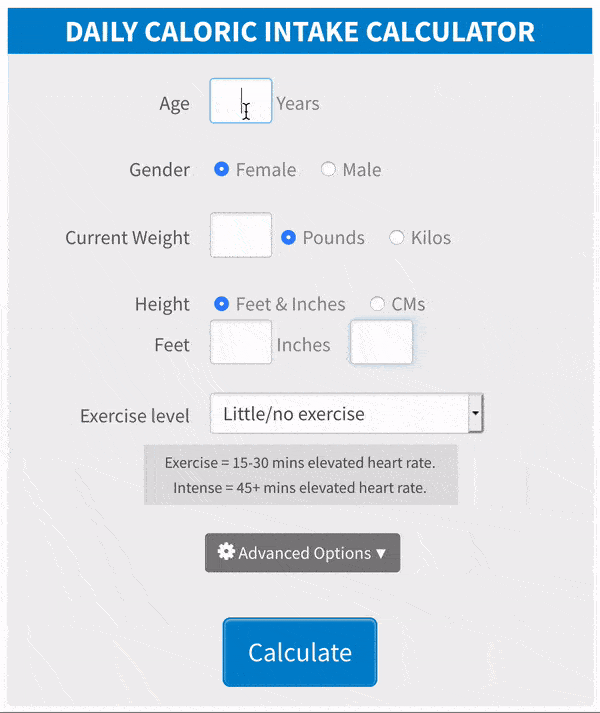
Sally is pushing forty.
That’s not a big deal in and of itself. Life has its ups and downs, but Sally feels good about how things are going, so the Big Four-O doesn’t feel like a particularly grim milestone.
There’s only one thing that Sally finds consistently frustrating about getting older: no matter how hard she tries, she can’t lose weight.
And believe me, she has tried.
In her apartment, Sally has a bookshelf filled with diet books. At least a dozen of them, some with worn edges, and others that have barely been opened.
She used to weigh in at a svelte 120 pounds, which she considered ideal for her medium-boned 5’ 4” frame. But that was back in college, before the kids, before the desk job, and before her thirties. At this point, she’d settle for anything south of 130.
But even 130 seems like a pipe dream. Her weight seems to have cemented itself at the 168-pound-mark, and it won’t budge. Every fad-diet success she’s had over the years has ended up being temporary.
Sally lost twelve pounds with Jenny Craig once, and thirteen pounds on Weight Watchers. She dropped eight pounds each on Ornish and Atkins. She’s gone macrobiotic, ketogenic, paleo, and flexitarian. She’s done the Wild Diet, the Taco Diet, the Zone Diet, the DASH, the MIND, and the TLC. She even had a brief but ill-fated flirtation with the Master Cleanse, but she prefers not to talk about that.
She started dieting when she first hit 165 pounds, and after all of her trials and tribulations, she now weighs 168 pounds. Worse yet, she suspects that, over the years, she has lost that entire 168 pounds at least twice over. Frustrating.
As every temporary triumph morphed into another disappointment, failure began to seem like the only permanent fixture on Sally’s long, disheartening journey to nowhere.
As of a year ago, she has finally decided that she is just going to accept it. She’s overweight, and she always will be.
Then she meets CICO.
When her colleague Jen first hears Sally mention CICO, she flashes a conspiratorial smile.
Cico? Who’s that? Is he handsome?
It’s not a person, Sally tells her. It’s an acronym.
Calories In, Calories Out.
CICO.
Sally watches Jen’s eyes glaze over.
Yeah. Pretty boring.
But for Sally, discovering CICO provides the same spark of wonderment as any headlong plunge into a heady new romance. After years of grueling deprivation—did she once really subsist on nothing but lemonade for a whole week?—punctuated by whirlwind binges involving mountains of butter cookies and oceans of chardonnay, everything suddenly seems so very clear.
It’s not what you eat; it’s how much you eat.
That’s it.
True, this isn’t exactly privileged information. She’s read it many times before, mostly on dull websites with dated designs and .org or .gov somewhere in the url.
Eat less, and you’ll lose weight. Yawn.
But now she begins to view things differently. What makes the idea so enticing, after the years-long diet gauntlet she has subjected herself to, is the simplicity of it all.
Calories in, calories out.
What if that is the only thing that really matters?
A diet with one rule.
Crazy, right? But it seems to be working for many people who have been through the same gauntlet she has. And the best part is that there is no book to buy, no program to join. The idea on its own is too simple for self-appointed diet gurus to cash in on.
She finds a well-regarded online calorie calculator and enters some basic information. Age, weight, height, exercise frequency. It’s a bit galling to select little/no exercise on that last item—she used to be so active—but she hardly ever jogs anymore, and she’s tired of lying to herself. She wants the most accurate picture possible.
Her maximum daily intake, the calculator says, should be 1371 calories if she wants sensible, consistent fat loss.

Okay, fine.
She plans three 400-calorie meals each day, leaving the remaining 171 calories as “floaters” that she can eat anytime she wants. Snack calories.
For the next week, she doesn’t waver in her commitment. She is highly motivated. After all the fad diets she’s been on, the simplicity of CICO is a relief.
It has one cardinal rule: never, ever go over your calorie limit.
But halfway through that first week, she begins to notice a familiar feeling: hunger. She is never quite ravenous, like she has been on some of her other diets, but she’s never really satisfied either.
Has she done her calculations correctly? What if she made a mistake? What if she is allowed to eat more?
She goes back to the online calculator and re-enters her information.
Nope. She’s allowed 1371 calories.
Darn.
Okay, what if she decides to start exercising? She selects 3 times/week from the Exercise Level pull-down menu, then hits calculate.
Wow.
If she starts exercising, her daily allotment will jump by 200 calories, allowing her to eat 1571 calories.
Done.
But wait. What’s that little blue button labeled 7-day calorie cycle (zig-zag)? She clicks on it, and a table full of numbers drops out.
Interesting.

According to the numbers on the table, she can vary her calorie count each day. It will be lower some days—as few as 1344 calories—but it also has a few high-calorie days, including one where she can eat almost 1900 calories. Same overall number of calories over the course of a week—about 11,000—but the amount is staggered from day to day.
Over the next three weeks, the zig-zag option proves to be a boon to Sally’s sanity. It’s a workable compromise. She can stand a day or two of mild hunger as long as she can have a few splurge days too. She decides to designate Saturdays as her high-calorie days, since that’s when she is more likely to go out for dinner. And her low-cal days, she decides, will also be her no-exercise days, since she’ll probably lack the energy to jog on those days.
Slowly, over the next few months, Sally sees her weight drop below 160. Then it drops below 150.
This is actually working. She wants to cry in relief.
She also finds, much to her surprise, that she is slowly becoming more interested in eating nutritious foods. Butter cookies are wonderful, but they only leave her wanting to eat more. Whole, unprocessed foods, on the other hand, tend to leave her feeling satisfied, and she is less likely to binge on them.
More importantly, they give her more “bang” for her calorie. Her secret weapon, when she feels herself starting that familiar downward slide from hungry to hangry, is a Fuji apple. She doesn’t particularly like apples, but something about a Fuji just takes the edge off.
She develops other secret weapons too. She decides to ignore the calories in leafy greens or high-fiber, low-calorie vegetables like green beans or broccoli, reasoning that the benefit of eating large amounts of these foods far outweighs their tiny caloric footprint. She also tries to eat sparingly during the daytime, since her natural proclivity is to eat more in the evening.
She can still have her chardonnay, and her butter cookies, and a slice of pizza every now and then. But most of the time, she finds herself eating healthier food, jealously guarding her daily allotment of calories and energy.
Around month four, she starts exercising more than three times a week. Not only does more exercise raise her daily allotment of calories; it makes her feel better. Working out three times a week allowed her to eat more. When she ups that to five workouts a week, she gets to eat more still.
Over the course of a year, Sally watches more and more pounds disappear. She does plateau now and then, sometimes losing no weight at all for a few weeks in a row. When that happens, she tweaks her plan, upping her exercise or shaving off a few calories. Sometimes just shifting calories around does the trick: packing more calories into her high-calorie days and removing some from her low-calorie days. She experiments often, never allowing a lack of progress to demotivate her, and she never stays on a plateau for too long.
She has to recalculate her caloric needs as she sheds pounds, but other than that, the whole thing is just… easy.
No, wait: easy isn’t the right word. CICO requires work, and sacrifice, and patience. It’s simple, but it isn’t easy. Still, after everything she’s been through, Sally is okay with that. Because whenever things start feeling complicated, all she has to do is remember the single overarching rule of CICO: burn more calories than you consume.
Calories in, calories out.
Those four words are liberating.
Once, when a friend from college comments on how great she looks and asks her which diet she’s on, Sally finds herself struggling for an answer. As she answers the question, she begins to simultaneously realize a core truth of CICO.
It isn’t a diet at all. At least not in the modern, trend-centric sense of the word.
In fact, she’s done with “diets.” All the ones she’s tried, and all those failures that wore such a deep groove into her self-esteem, are now in the past. She’ll never, ever have to do that again, and it feels good.
She’s free.
When she started counting her calories, she had no intention of spending a year doing it. She had been conditioned by the strident claims made by people trying to sell diet books and products. Lose 30 pounds in 30 days! In that context, a year seemed like forever.
Now, looking back, a year seems like nothing. Her life has changed completely. Her habits, her goals, and the way she feels about herself are completely different. She hasn’t dipped below 130 pounds yet, but she’ll get there soon. And when she does, she has no intention of stopping her calorie-counting. She’ll simply move into maintenance mode. She’ll eat more, keep exercising, and keep being the new version of her that she has come to love so much.
It’s mostly automatic now anyway: she started out by measuring her food, weighing it on her food scale, and tallying it all on a spreadsheet. After a year of CICO, she can look at a plate of food and tally most of the calories in her head. The constant calorie-counting has morphed into a shrewd awareness of everything she puts into her body. She doesn’t want to let that go.
That shelf where the diet books used to be is now full of lush green plants, and the diet books have long since been chucked into the recycle bin.
Which is exactly where most diet books belong, Sally thinks.
Maybe the paper they were printed on can now be turned into something that is actually useful.
